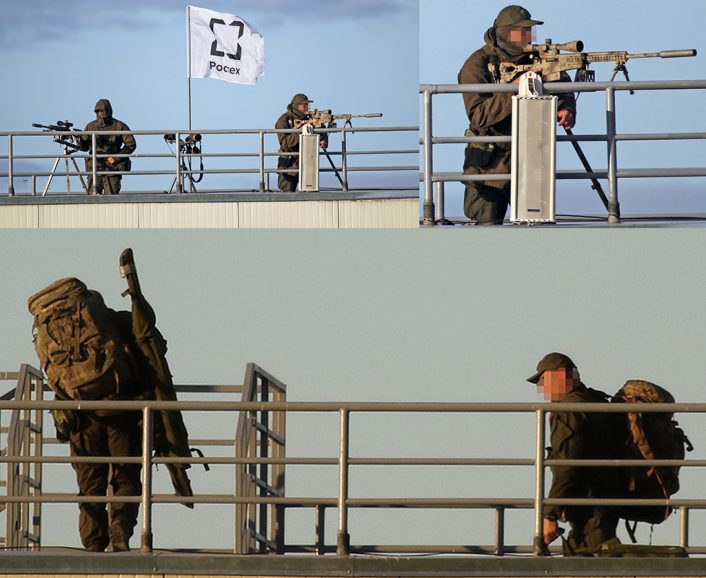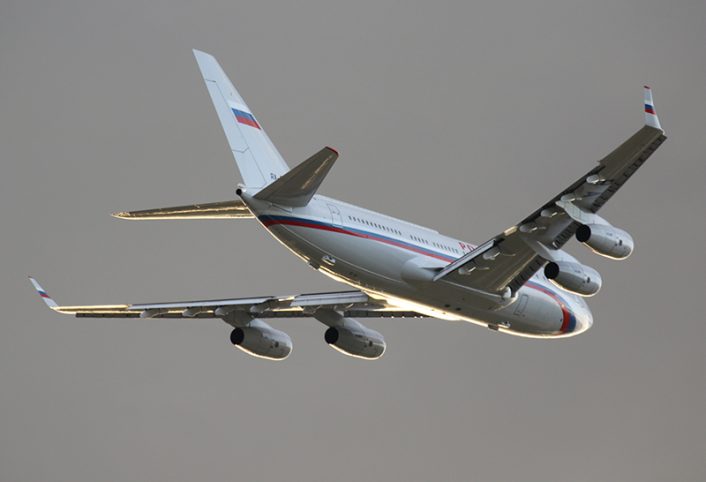Some Interesting Photos of The Russian President’s Aircraft, Support Detail and More.
Transporting important heads of state for highly visible functions is a massive job involving logistics and security on a vast scale.
On Tuesday, August 27th at the MAKS Aviasalon 2019 Air Show at Zhukovsky International Airport outside Moscow, Russia, we got an insider’s look at how the President of Russia, Vladimir Putin, and Turkey’s President, Recep Erdoğan, travel during an official visit and how their vast assembly of aircraft and support personnel operate during the event.
President Putin arrived at Zhukovsky on Tuesday, Aug. 27, 2019 in one of his large Ilyushin Il-96-300s four engine transports that are permanently based at Vnukovo Air Base. Two of the aircraft, “State Air 1”, registration 96021 and a support aircraft, “State Air 2”, wearing registration 96022, supported the Russian President’s visit to MAKS 2019 today. One of the aircraft, 96022, carries the press corps and other support personnel and dignitaries.

Both Presidential aircraft were parked at the end of the airshow chalets at MAKS 2019. The President held meetings with Turkish President Recep Erdoğan and watched several flight demonstrations during his visit that included a MiG-35 and three Sukhoi Su-57s.

Interestingly, a Tu-214SR aircraft, whose role is to acting as a flying radio relay system between the Presidential/Government plane, ground-based receivers and satellites, also accompanied Putin to MAKS.

Because there were two heads of state at Zhukovsky for meetings and a special, shortened version of the MAKS 2019 flight demonstrations there were a large number of VIP transports at the airport. These included at least three large, fixed wing aircraft supporting the Russian President and five helicopters along with at least three large jets including a Turkish Presidential Airbus A319 and two smaller Turkish VIP transports.

Russian Minister of Defense Sergey Shoygu was also in attendance, bringing with him a pair of fresh-looking camouflage Mi-6s. Three white Mi-6s accompanied the helicopter flight, carrying security and administrative forces including a pair of security observers who provided overwatch during the President’s outside movements with a pair of sniper rifles.
Security teams supporting the event maintained a low-key presence since only media and industry persons were allowed inside Zhukovsky on this day of the airshow.

In the morning police and air show administrators used metal detectors and thorough bag checks, including switching on smartphones and disassembling cameras, to screen journalists into Zhukovsky. There were also extensive checks of personal documents including travel visas and passports for foreign journalists and ID checks for resident journalists.
Once inside the first security ring we worked normally in the media center and around the many fascinating trade show displays at MAKS 2019. Weeks prior to covering the Russian President’s visit to MAKS 2019, foreign journalists like our team also had to receive official accreditation and pass background security checks that are normal for international press.
Considering the significance of President Putin and President Erdoğan’s meeting the event had a low-key feel once inside the airshow, most probably because security screening had begun weeks in advance was very thorough. President Putin added levity to the proceedings by buying ice cream from the same vending woman he visited two years ago at MAKS 2017. President Putin paid for the ice cream with a 5000 ruble note, about $75 U.S. dollars, joking that the change should be given to the Minister of Internal Affairs to “develop aviation’.
Once the flight demonstrations and meetings were over, the delegation inspected both the Russian Su-57 static display and the MiG-35 display, fueling speculation that President Erdoğan’s visit was motivated by the U.S. refusal to export F-35 joint strike fighters to Turkey because of Turkey’s dependence on Russia for anti-aircraft missile systems and concerns surrounding operational security for Turkish F-35s. The leaders made brief remarks and then returned to their respective aircraft for departure.
Even with the number of aircraft, vehicles and personnel involved in both the Turkish and Russian delegation, the entire group except for some remaining support assets had departed Zhukovsky in less than an hour. The entire experience provided a fascinating set of insights into the aircraft and support resources used to support the movement and work of important heads of state.










